Welcome to our comprehensive guide to Transportation in Morocco.
Some of the most frequent questions we get asked are variations on; “What’s public transport like in Morocco?“, “What’s the main method of transportation there?“, “What is the cheapest way to get about?” and “What’s the best way to travel around Morocco?“.
This Transportation in Morocco guide will answer all of those questions and more, when you know how, travelling in Morocco is cheap, fast and easy as the country has the best rail service in North Africa, frequent bus and coach services to virtually everywhere and cheap taxis. If you want to rent a car or bring your own, that’s simple, too.
But before we elucidate…
How to get to Morocco
The vast majority of visitors to Morocco fly into the country, mostly to the large, modern airport at Casablanca, but also, increasingly, to other major cities such as Marrakech or Fes. Morocco is an ever-increasingly popular tourist destination, so you will find that many cities across the world offer services to the country.
RAM, or Royal Air Maroc, is the flagship national carrier and provides a very good service, both internationally and within Morocco from city to city. A lot of the cheaper “bucket” airlines including EasyJet and Ryanair also provide regular flights into and out of the country from many other countries.
The other main way of getting into Morocco is via a ferry from Spain to Tangier. This is very quick and cheap, less than an hour from Tarifa to Tangier, or a little longer from Algeciras to the new and growing port of Tangier Med.
You can bring your car, camper or motorbike if you require as most of these are the roll-on/ roll-off type of ferry. It is also possible to enter the country via the Spanish enclaves of Ceuta and Melilla, but you will need to cross from Spain or Gibraltar by ferry first. France, Italy and other cities in Spain also provide less regular ferry services.
Please note that the border with Algeria is closed and thus you cannot enter or leave the country this way. It is possible to enter and exit via Mauretania in the south, but this is a little more awkward and complicated.
Trains in Morocco.
The Moroccan train service is a lot better than it used to be. Most of the major cities have a station or two, which have been recently modernized and are usually conveniently situated near the centre of the cities. The trains are modern, comfortable, air-conditioned and not expensive, even first class, which is highly recommended and the best way of travelling through most of Morocco, in our opinion.
The main train line runs from Tangier to Marrakech, but a branch line goes through Meknes, Fes and terminates in Oujda. New lines to other places are being constructed. Since 2018 there is a high-speed LGV service from Tangier to Casablanca and Kenitra and this is excellent and also soon to be extended to other lines.
Look online to find the ONCF website and check out the timetables and tariffs. Electronic information boards and timetables are prominently displayed at the stations and the clerks and security staff are very helpful and usually speak reasonable English. Porters are available for a few Dirhams.
It is not necessary to book in advance, unless you are planning on using one of the overnight sleeper services, generally you buy your ticket on arrival at the station before going onto the platform.
Obviously, the first-class service is a little more expensive, but it’s a lot better if you can afford it, as you will have an allocated seat number, whereas second-class can be overcrowded and sometimes hot and stuffy.
Second class is only slightly more than the cost of a coach, but the LGV is a little pricier. Keep a hold of your tickets as the conductor will come through the train to check them and you need them to exit the station when you arrive at your destination.
Night trains, known as couchettes, run on the longer journeys; from Tangier to Marrakech and Casablanca to Oujda, for example, and these offer a premium service of a guard and your own lockable carriage, included in the ticket price.
Word of Warning! Take your own toilet paper, as the toilets don’t usually have any available and can be pretty disgusting, even for first class, you may need extra to wipe down the seat. Yuck!
Buses and Coaches In Morocco.
The buses in Morocco are the cheapest way of getting about in a city, but not necessarily the best. They are jaw-droppingly low cost, but only operate in the city they are based in and its suburbs. But there is often a rush and a bit of push and shove as everyone tries to get on first and find a seat, as often there is standing room only.
The buses are often hot and stuffy and much slower than a taxi, as they seem to stop every thirty seconds. You should know the destination, number and time of your bus and where all the stops are, but this information is often hard to locate and the buses are not exactly always on time. I would recommend that the uninitiated use petit taxis for transport within a city unless you are already familiar with the system.
Coaches run from one city to another, and they run from the major cities to and from nearly every village, town and city in the country. There are dozens of different companies and coaches are often the cheapest way of travelling long distances, but many of them are old, uncomfortable, not air-conditioned and have an alarming tendency to break down. Some of the driving is a bit hair-raising too, especially on some of the bumpy, twisting mountain roads where you often feel you’re going to plunge into a ravine at any second.
Luckily, accidents are very rare. Older coaches don’t have much legroom which can be very painful if you are a taller person. In the summer months, they can be very hot and distinctly malodorous as some men tend to take off their shoes and some don’t use deodorant before travelling. For these reasons, it is often better to travel by night. People often eat lots of cakes, then are sick into bags and I’ve seen other unspeakable acts.
The coaches, unlike the buses, do have allocated seat numbers, though you will often have to politely ask someone to move, which can end in amusing games of checking numbers and trying to work out which seat is which number, which isn’t always as easy as it sounds.
If you do have a choice, try to find a seat on the side of the coach on the opposite side to the sun. Much cooler, though the coaches usually have blinds or curtains which can help a bit but spoil the often-spectacular views.
To put it another way, if you are travelling from south to north in the morning, sit on the left of the coach and sit on the right if travelling north-south. If going east to west sit on the right and west-east find a seat on the left. Reverse all this if you are taking your trip in the afternoon.
Some coaches have a toilet, others don’t. They are usually okay at the start of a journey, but fairly grim at the end. Bring your own loo roll.
Longer trips usually have a pit stop or two where you can get off the coach, stretch your legs, maybe get a coffee or a snack, but do check with the driver or his assistant to check how long the stop will be. You don’t want to get left behind at some truck stop in the middle of nowhere.
The national coach company is called CTM and in larger towns and cities has its own coach station. These are an entirely different kettle of fish, as they are more modern, comfortable, air-conditioned and reliable. They are a bit more expensive than the other companies, though.
In the cities, the coach stations are known as the gare routiere, are stuck somewhere on the edge of town. There are a lot of ticket windows and coach bays and the signs on these and on the coaches themselves are often written in Arabic, so it can be a tad confusing. Ask around, you’ll find someone who can speak a little English and there are plenty of touts and chancers willing to help you out for a few dirhams.
Plenty of times you’ll be asked where you want to go by boys or touts before you even get into the terminal. The callers will constantly be shouting out the destinations of the coaches loading, so it can all become rather chaotic. We would recommend buying your ticket in advance on some of the busier routes or during the school holidays, festivals and peak tourist times.
On the edge of the streets, or in the smaller places that don’t have a designated coach station, it is possible to wave down some of the coaches and they will usually stop if a spare seat is to be had, but CTM won’t, so don’t bother trying. Sometimes, it is better to take a taxi to a larger town and catch a coach there.
As is the case anywhere, luggage is loaded into the coach at the sides, under the seating section. There is a luggage handler who places the bags into the space, the idea being those who are getting off first have their bags on the outside. You will have to pay the handler 5 to 10 dirhams for his work.
They will sometimes ticket your luggage, sometimes scribble on it with chalk and are sometimes a bit rough with it, You should retrieve your bags yourself when you reach your destination, though someone might offer to help for a small sum, this is not necessary. Porters with trolleys are always looking for custom, but please ensure you agree a price in advance. Haggling is quite acceptable.
Lastly, we should mention the Supratours links which are operated by ONCF, the train company. These provide a service from the train terminals at Tangier, Marrakech and Oujda with Agadir, Essaouira, the Moroccan Sahara and Tetouan. These are very reasonable, quick and comfortable, but have their own stations, they don’t run from the ordinary coach stations.
Taxis in Morocco.
There are two different varieties of taxis found in Morocco; the petit taxis, that are licensed only for the city they’re based in, and the grand taxis, that travel from city to city or other longer routes.
Petit taxis are found by the hundreds in the cities of Morocco, and often outnumber private cars on the roads, They are very cheap and the best way for locals and tourists to get from place to place in the city. They are easily recognized due to the roof rack with “TAXI” written on all sides as well as the taxi number, and each city has a different colour used for all their petit taxis, red in Casablanca, beige in Marrakech and blue in Tangier, for example.
Usually, they are small Dacias, small Fiat Unos, or 127s, or small Subarus. They can be flagged down when you see one with a spare seat. Or there are set taxi ranks. They seat two in the back and one in the passenger seat, aren’t especially comfortable but perfectly adequate for a short hop in the city.
Recommended, in fact. The taxis have a metre with a set price per 100m after the minimum fare, so make sure the metre is reset and switched on when you get in. If they say it is broken don’t believe it and get another taxi, there’s usually plenty about, though it’s a bit of a scramble to get one in busy areas and at busy times of the day.
The price is a little higher in the evening, but still very good value. If someone is already in a taxi that you hail, be prepared to go to their destination first and then on to yours. You still pay the full fare from the time you got in the car. Also, don’t be surprised if the driver stops en route to pick up another fare if there is a spare seat or two and they’re heading in roughly the same direction. This is normal, but ensure you go to your destination first.
Taxis waiting outside the train station are usually scam artists, won’t turn the clock on and will invariably ask you to pay a ridiculous amount for your journey, knowing you are tired after a long journey and hoping you don’t know the true price or are too desperate to care. I usually cross over the road and wave down the next regular petit taxi that passes.
The larger grand taxis are used to travel into the countryside or from city to city. They are usually rather old, white or beige Mercedes, occasionally Peugeots, and have set ranks in the city centres or by the train stations. They are reasonably, occasionally dangerously fast, and as the price is shared by all the passengers, relatively cheap.
They transport six passengers, four crammed into the back and two squeezed onto the passenger seat. Not always ideal for a long journey, especially as they usually don’t have air-conditioning. Or at least that works. You can pay for more than one seat if you’d like a more comfortable ride.
Prices are fixed and should be posted at the taxi rank. Ask to see the tariffs if you can’t see the list. The most popular routes will soon fill the car, so you won’t have to wait long if you arrive nice and early in the morning, but by lunchtime it will be busy and the wait might be several hours.
Sometimes, a grand taxi driver will assume you are a wealthy foreigner and want the whole taxi to yourself, so will set off with just you in the car, This can be very expensive. You have been warned.
Car Hire in Morocco
As with anywhere, you can book online with all the usual big names; Hertz, Avis, Budget and Europcar all have branches across Morocco.
Or there are car hire outlets for these franchises at the airports of Casablanca, Marrakech, Fes and Agadir, so you can book a car when you get off the plane, just ensure you have all the paperwork you need. Alternatively, your hotel, travel agent or tour operator will be happy to arrange it for you.
There are also a lot of Moroccan firms offering car hire services, but be sure to check the condition of the vehicle before you drive away in it. Make sure that there is a spare tyre and that it is in a good condition and check there is a toolkit and all the necessary documentation. Of course, you should also have full insurance to avoid unfortunate instances of having to pay for a scratch that may have been there all along. Basic insurance doesn’t cover off-roading.
On average it will cost you about 500DH a day. ($50 / £40 ) or about 3,000DH for a week ( $310 or £250), but it may have gone up as the latest figures I had were from before Covid and Ukraine. Usually, you have to rent the vehicle for a minimum of three days. This is just for a standard car and basic insurance cover. anything more luxurious will cost more.
TOP TIP: Something to think about is that the cost of chartering a grand taxi with driver with a previously agreed price will not be too different from car rental.
Driving in Morocco.
No matter if you decide to drive your own vehicle in Morocco or if you rent a car, here are some Top Tips regarding driving in Morocco. Asa rule, driving in our marvelous country under the blue skies is fun and exhilarating, can’t be beaten anywhere in the world; the roads are mostly in good condition, there aren’t many vehicles on the road outside the major population centres which means you can cover a lot of miles very fast.
But beware! Some off the beaten track country roads are pretty bad, there are yawning ravines and hairpin corners and driving in the city can be a horrifying experience.
1. Road Safety.
Please take care! Morocco has a horrendous road safety record and traffic accident fatalities are an everyday occurrence. A large number of Moroccan drivers don’t know the laws or won’t follow the rules even when they do. Moroccan men enjoy driving at speed and are aggressive drivers. They will change lanes frequently with no regard for where they’re actually going, extra lanes are only for overtaking. They will stop just beyond the traffic lights to gain an extra few metres, but then can’t see the lights changing and will only accelerate away when the queue behind start honking their horns at them.
Motorcyclists frequently won’t stop at red lights at all. Drivers will overtake with oncoming traffic, on bling corners, hairpins and hills. Pedestrians walk in the roads, even when there are pavements, though cars park on the pavements quite often or the sidewalks are blocked with cafe tables. Cars won’t usually stop at zebra crossings, so be careful crossing the road, and, as a driver, beware as pedestrians will cross the road anywhere at any time, often without looking, just assuming you’ll decide not to hit them so be ready for people stepping out right in front of you.
2. Laws, Rules and Regulations.
Like in most countries, in Morocco you must drive on the right side of the road, so you Brits out there, pay attention!
In urban areas the maximum speed limit is 60 km/h (37mph), on rural roads it is 100 km/h (62 mph) and on motorways it is 120 km/h (75 mph). It’s not that simple, of course, as there are often signs that vary from these due to bad road surfaces, dangerous bends, accident hotspots and so on.
There are a great number of highway police check points and random stops, roadblocks and radar traps, both day and night and the police are quite happy to dish out fines to anyone caught speeding or guilty of other traffic violations.
Watch out for motorists travelling in the opposite direction flashing their lights at you, this is often a warning that there is a police checkpoint ahead.
At roundabouts, priority is to the right, so that those moving onto the roundabout have the right of way over those already on it.
Unless you are a passenger in a taxi, seatbelts are compulsory, though a lot of people don’t wear them, we strongly advise that you wear yours.
In Morocco, the minimum driving age is 17 for motorcycles, 18 for cars and 21 for lorries.
You must have your driving license, insurance documents and passport on you at all times. US, EU, British and Australian driver’s licenses are all valid, but an international driving license in French is a jolly good idea, particularly if your usual license doesn’t have a photo as this has been known to cause a problem with the Moroccan police, who are usually very polite and tolerant, by the way.
3. Driving at night.
For some bonkers reason, in Morocco it is legal to drive in the hours of darkness at up to 20 km/h, so be alert for vehicles, and particularly motorbikes and bicycles, suddenly appearing out of nowhere in the night.
There is also a reasonable risk of animals on the roads; packs of dogs roam free at night and will often chase the car, there are also deer, cats and wild boar that seem to be hiding behind a bush, just waiting for you to come along so they can leap out in front of you.
Another danger to look out for is the massively overloaded trucks that inch their way along the roads, mainly at night, and as well as being difficult to pass, will cause a problem as other drivers do stupid things trying to pass them.
4. Fuel.
Petrol, gas, or whatever you wish to call it, is reasonably cheap, though the prices have risen somewhat in the last couple of years.
If you are going to be driving a long distance, fill up your tank when you get a chance, because you just don’t know when you’ll come across the next open petrol/gas station.
Unleaded, called “sans plomb” here, is on offer pretty much everywhere.
5. Insurance.
Your rental agreement will include insurance, as this is a legal requirement.
If you are bringing your own vehicle into Morocco, then you should get Green Card cover from your own insurer or from Assurance Frontiere on arrival at Tangier, Nador, Sebta (Ceuta) or Melilla.
6. Parking.
Everywhere you can park, from roadsides to “official” car parks, you will find the Guardians, sometimes offcial, sometimes definitely not, but worth paying a few dirhams just to be on the safe side. There are a few people about who like to damage nice looking cars out of spite.
Red and white stripes painted along the curb indicate that parking is prohibited.
Internal Flights in Morocco.
There are lots of regional airports in Morocco and flights to and from these are normally under the auspices of RAM, Royal Air Maroc, the national carrier.
We wouldn’t usually recommend them, though, not because they’re bad, but because they are rather expensive and there are far cheaper options available. You must also factor in that the airports can be a fair distance outside the city, so you have extra time, money and organization on top of the flight itself.
The exception might be if you are planning on visiting Dakhla or Laayoune in the Moroccan Sahara which is a really long way by taxi or bus and the trains don’t go anywhere near. Flying may be more costly, but in this case would save you a lot of time and discomfort. Only two hours flying time from Casablanca to Laayoune, for example, whereas a coach would take about twenty hours! Dakhla is a two-and-a-half-hour flight but nearly thirty hours by road.
You should confirm your flights 72 hours before the departure time.
Students and young persons (under 25s) can get a discount if you apply at the official RAM offices.
Camels in Morocco.
A must for any visit to Morocco is a camel trek in the Sahara 😉
Read also: Hire a private driver in Morocco







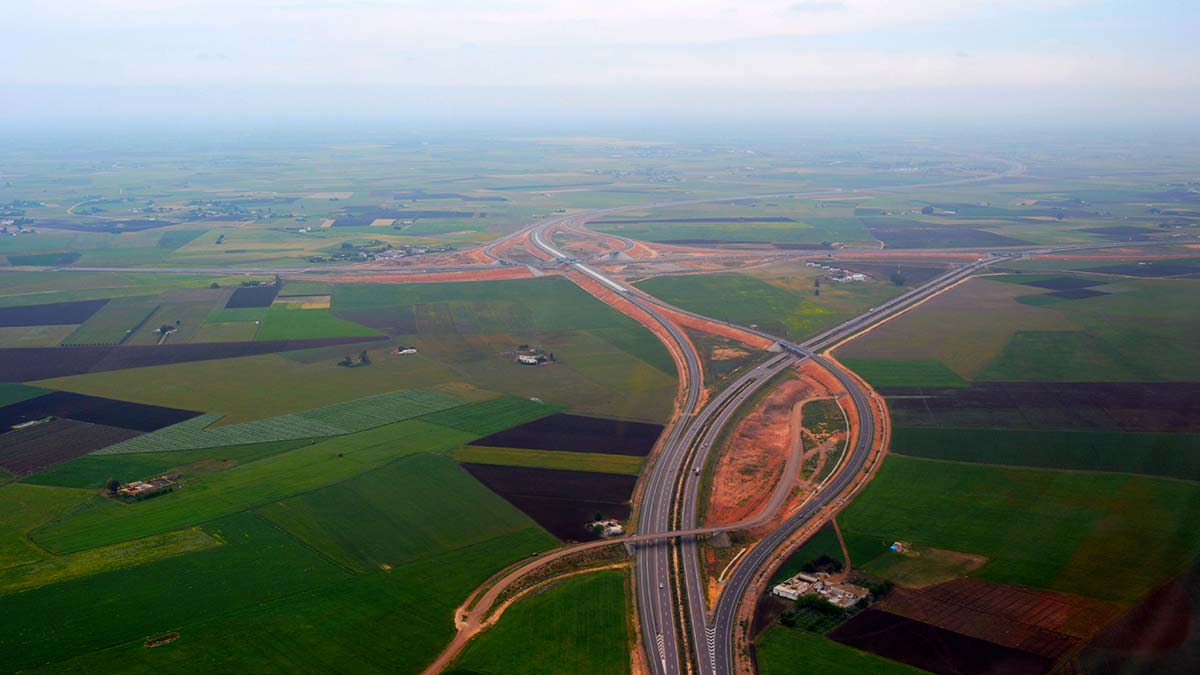
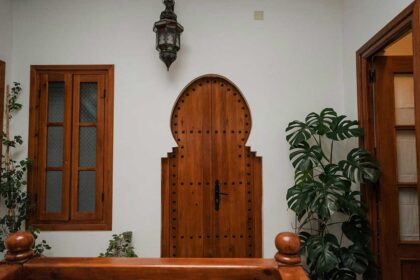
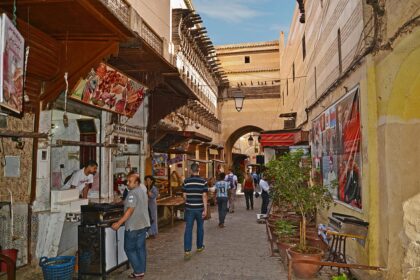
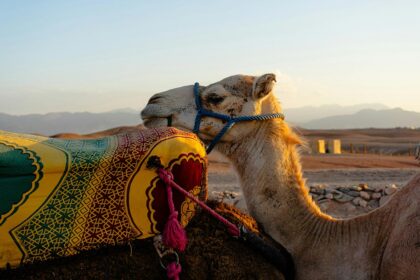
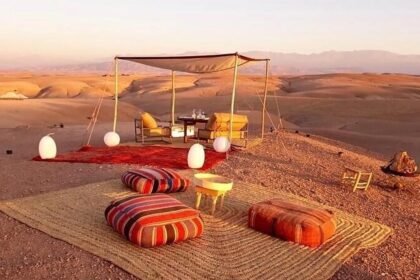
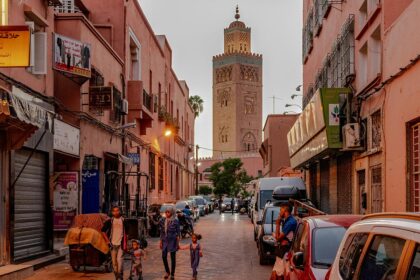
Very good and easy-to-understand explanation about transportations means in Morocco. From the comprehensive viewpoints, I would have better join in a tour when getting around this country. That’s the best safety way for foreign tourists who are not tamed in this country. But I’m interested in train system, I try. Thank you.
Excellent help and advice, information etc….thank you.